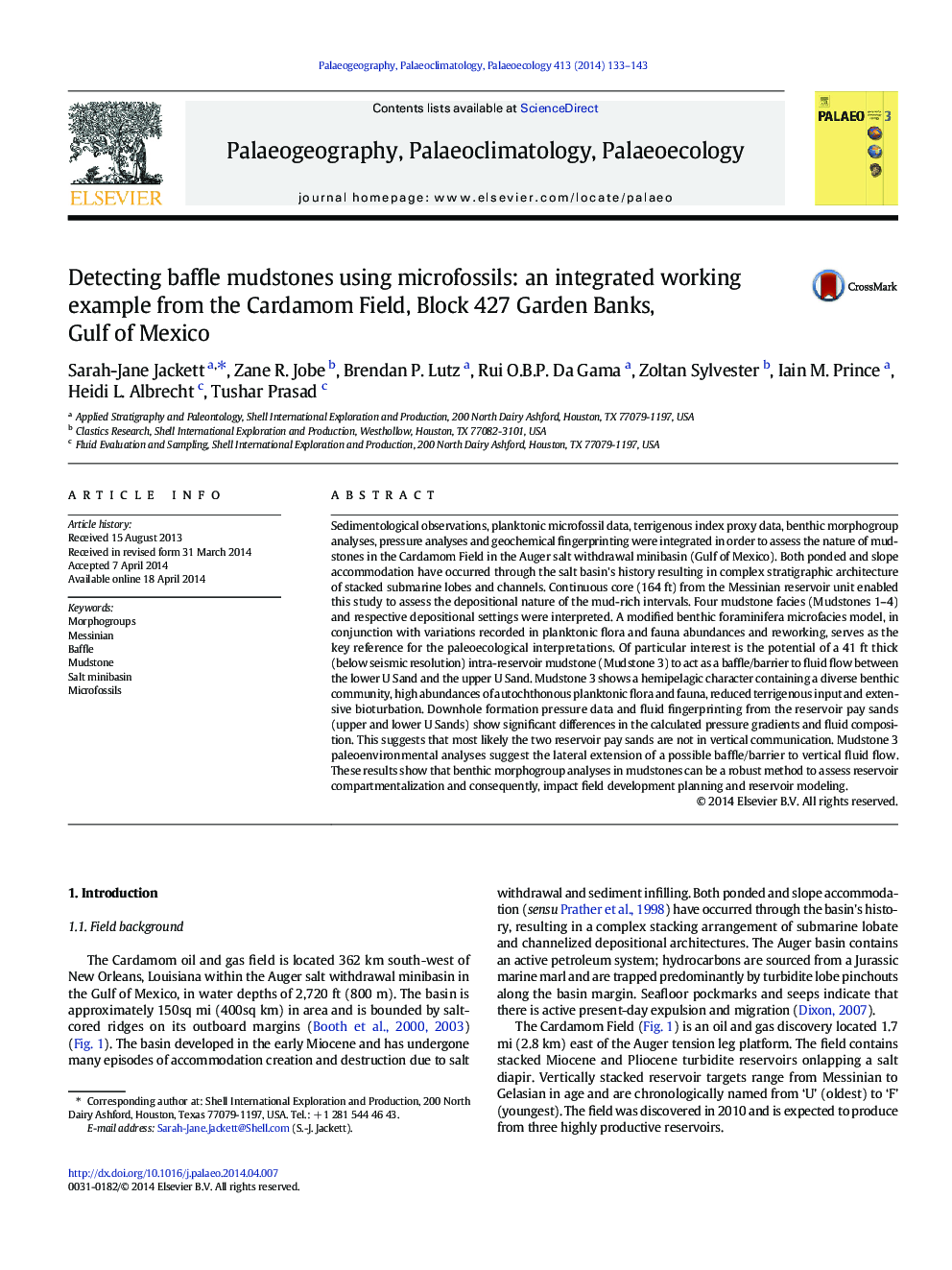| کد مقاله | کد نشریه | سال انتشار | مقاله انگلیسی | نسخه تمام متن |
|---|---|---|---|---|
| 4466150 | 1622177 | 2014 | 11 صفحه PDF | دانلود رایگان |
• Multidisciplinary studies distinguish four environments of mudstone deposition.
• Benthic foraminifera morphogroup analysis is a robust method in mudstones.
• Understanding intra-reservoir mudstones impacts field development planning.
Sedimentological observations, planktonic microfossil data, terrigenous index proxy data, benthic morphogroup analyses, pressure analyses and geochemical fingerprinting were integrated in order to assess the nature of mudstones in the Cardamom Field in the Auger salt withdrawal minibasin (Gulf of Mexico). Both ponded and slope accommodation have occurred through the salt basin's history resulting in complex stratigraphic architecture of stacked submarine lobes and channels. Continuous core (164 ft) from the Messinian reservoir unit enabled this study to assess the depositional nature of the mud-rich intervals. Four mudstone facies (Mudstones 1–4) and respective depositional settings were interpreted. A modified benthic foraminifera microfacies model, in conjunction with variations recorded in planktonic flora and fauna abundances and reworking, serves as the key reference for the paleoecological interpretations. Of particular interest is the potential of a 41 ft thick (below seismic resolution) intra-reservoir mudstone (Mudstone 3) to act as a baffle/barrier to fluid flow between the lower U Sand and the upper U Sand. Mudstone 3 shows a hemipelagic character containing a diverse benthic community, high abundances of autochthonous planktonic flora and fauna, reduced terrigenous input and extensive bioturbation. Downhole formation pressure data and fluid fingerprinting from the reservoir pay sands (upper and lower U Sands) show significant differences in the calculated pressure gradients and fluid composition. This suggests that most likely the two reservoir pay sands are not in vertical communication. Mudstone 3 paleoenvironmental analyses suggest the lateral extension of a possible baffle/barrier to vertical fluid flow. These results show that benthic morphogroup analyses in mudstones can be a robust method to assess reservoir compartmentalization and consequently, impact field development planning and reservoir modeling.
Journal: Palaeogeography, Palaeoclimatology, Palaeoecology - Volume 413, 1 November 2014, Pages 133–143
